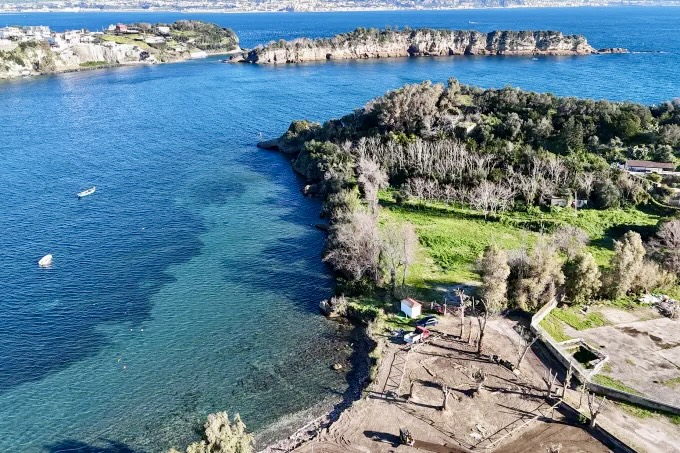2,000-year-old beach house discovered during building work
A three-year project to build a children’s playground and recreation area south of the Italian city of Naples has unearthed the ruins of a 2,000-year-old clifftop beach house.
Built in the first century, the panoramic mansion — which overlooks the islands of Ischia and Procida — is now partly flooded by the sea. Experts believe it could have once been the opulent residence of Pliny the Elder, the legendary author, naturalist, and commander of the Roman navy fleet stationed there.
The discovery, made last week in the coastal town of Bacoli, unearthed the thick perimeter stone walls of 10 large rooms with floors, tiled walls and a maze of intact panoramic outdoor terraces.
Back in the first century, the mansion would have been located within the Roman port at Misenum, where for four centuries a fleet of 70 ships controlled the Tyrrhenian Sea, the security of which was key to holding the western flank of the Roman empire.
“It is likely that the majestic villa had a 360-degree view of the gulf of Naples for strategic military purposes,” Simona Formola, lead archaeologist at Naples’ art heritage, told CNN in an interview. “We think (the excavation of) deeper layers could reveal more rooms and even frescoes — potentially also precious findings.”
Authorities were surprised by the elaborate style of the walls, which were constructed with diamond-shaped tufa (limestone) blocks placed in a net-like ornamental pattern about 70 centimeters (27.5 inches) below ground.
The villa runs down to a little crumbling stone dock now located about four meters below sea level. That this — and other parts of the unearthed villa — are now underwater is due to the phenomenon of “negative bradyseism,” a term used to describe the gradual descent of the earth’s surface into the sea in areas exposed to frequent volcanic activity. (The area borders a moon-shaped “caldera” or extinct volcanic crater).
Naples, Italy CNN





